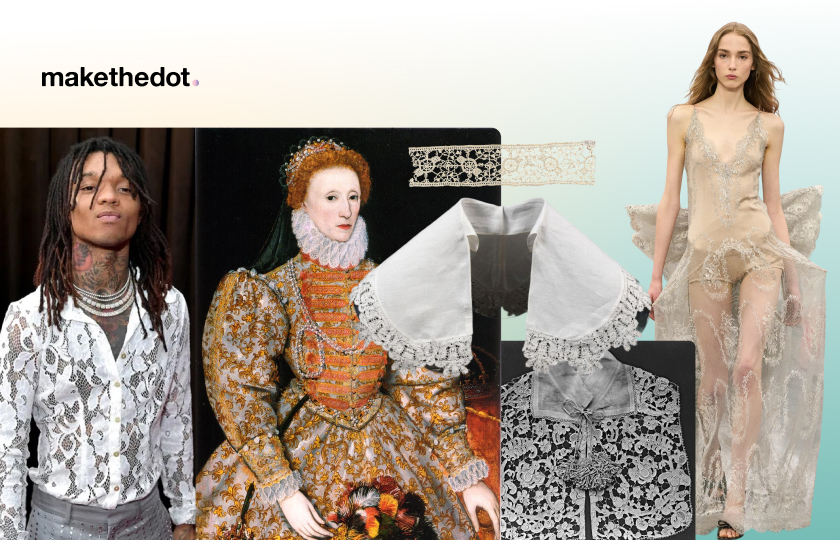Originally called a flight jacket, a bomber jacket is a heavy-duty jacket, with the history of the bomber jacket steeped in military significance.
First designed for bomber pilots in WWI (hence the name), they are typically made of leather, nylon, or cotton and have a zippered front, elasticated cuffs and waistband, and a ribbed collar.
Bomber jackets are also known for their shorter length, usually reaching the waste of hips.
In today's blog, we deep dive into the history of the bomber jacket, key models, materials, uses in the field, and evolution into the popular culture we see today.
But first, a quick summary.
TL;DR
- WWI: Born in the face of harsh conditions, the first "flight jackets" emerged in 1917. Made from thick horse leather or sealskin, lined with fur, and featuring wide collars, these bulky garments aimed to combat the freezing temperatures of open-air cockpits
- WWII: The history of the bomber jacket evolved into more tailoring for specific needs, with The B-15, adopted by the US Army Air Forces, featuring a lighter nylon shell and fur collar, while the B-3 was larger and thicker for high altitude bombing raids
- Korean War: The MA-1, introduced a water-resistant nylon outer and reversible orange lining for rescue purposes and became the primary bomber jacket for the US, with adjustments like a lighter lining for the warmer Korean climate
- Vietnam War: The iconic "Sage Green" jungle fatigues, including the MA-1 variant, for camouflage in the dense Vietnamese jungle. New functionality included map pockets and epaulets crucial for combat operations
- Move to Pop Culture: From WWII heroes in the film Casablanca (1942) to hip-hop icons like Run-DMC, the history of the bomber jacket migrated to pop culture in a story of rebellion and self-expression. Its adaptability saw variations in materials like satin, suede, and faux fur, with actors cementing its coolness and musicians adopting it as a symbol of anti-establishmentarianism.
Read on for a detailed history of the bomber jacket and its migration from a tool of war to a cultural pop icon.

History of the Bomber Jacket
WWI 1914-1918
The history of the bomber jacket begins with the US Army Aviation Clothing Board developing the first flight jackets in 1917 to keep pilots warm while carrying out bombing raids in the cold open-air cockpits of fighter planes during WWI.
Known as “aces,” these pilots required a warm, insulating jacket that was still comfortable and flexible enough for maximum dexterity.
Therefore, the first few flight jacket iterations were made of thick horse leather or sealskin, making them very durable and lined with fur.
They also featured wide, bulky collars and a short length that stopped at the waist, making sitting down in a cockpit comfortable and flexible.
The history of the bomber jacket can be traced to this era, with the first standardized jacket produced by the US Army coming in 1927, called the A-1.
The A-1's specs included a knit waistband and cuffs for better insulation and were often made of horsehide, sheepskin, or goat skin leather.
It also featured a button closure and flap pockets.
The A-1 soon gave way to the A-2 in the 1930s, which switched out the buttons for a more secure zip closure and featured a fold-down collar, inspiring a vintage and instantly recognizable silhouette.

WWII 1939-1945
The history of the bomber jacket developed in WWII when the flight jacket of WWI evolved into the first true bomber jacket.
As technology allowed planes to fly higher and faster, the need for even greater warmth increased, leading to the development of the B-3, which contained thick shearling.
In the UK, the Irvin jacket (1932) featured horsehide, nylon zippers, and knit cuffs and focused on warmth in the face of extreme cold above all else.
Jackets during this period first saw the use of nylon, a pioneering synthetic fabric valued for its water resistance and lightweight properties.
The bomber jacket's most famous iteration, the B-15, was developed during this period.
Developed for the US Army Air Force, the outer shells were made of nylon or a cotton-rayon blend, with wool-knit cuffs, also featuring a mouton fur collar and oxygen mask straps.
Created separately as specifically for bomber pilots, the MA-1 replaced the B-15s fur collar with a wool knit and nylon and polyester shell, allowing for a lighter jacket.
The MA-1 introduced a bright orange lining to aid rescues in case of a pilot crash during a bombing raid.

Korean War 1950-1953
During the Korean War, the MA-1 remained the staple standardized jacket used by the armed forces.
As cockpits began to close and jet engines became common, lightweight, conformable jackets became more necessary.
Therefore, for the warmer Korean climate, the MA-1s lining was replaced with lighter, cooler materials made from synthetics.
For the first time in the history of the bomber jacket, the color of the outer shell was changed, this time to olive green.
It was from this period that we got the silhouette for the modern, light, spring-jacket style bomber jacket seen on most high streets today.

Vietnam War 1955-1975
The history of the bomber jacket continues into the Vietnam War, which was characterized by continued usage of the MA-1, with the iconic “sage green” variant introduced as camouflage for the jungles of Vietnam.
Feature-wise, these jackets contained map pockets and epaulets crucial for combat operations and were created from lightweight, breathable materials for the tropical climate of the region.
Finally, the M-65 introduced even larger pockets, a drawstring waist, and a zip-out liner.
It was made from cotton-nylon blends for durability and breathability and offered adaptability to diverse field conditions.
It also included water-repellent treatments for the humid Vietnamese climate.

Jacket and Uses
A-1
Used For
Open cockpit bombing raids in freezing high-altitude temperatures
Materials and Features
- Outer Shell - Heavy, thick leather, usually horsehide, sheepskin or goat leather
- Trims - Fur lining, knit waistband and cuffs and button closure
- Fit - Bulky fit, wide collar and length stopping at the waist

A-2
Used For
Closed cockpit bombing raids and air-to-air combat in high-altitude freezing temperatures
Materials and Features
- Outer Shell - Medium-thickness leather, usually horsehide or sheepskin
- Trims - Fur lining, elasticated knit waistbands and cuffs and zip closure
- Fit - Slimmer fit, high collar and length stopping at the waist

G-1
Used For
Closed cockpit bombing raids and air-to-air combat in high-altitude freezing temperatures
Materials and Features
- Outer Shell - Medium thickness leather, usually cow leather
- Trims - Mouton fur collar and lining, elasticated knit waistbands and cuffs and zip closure
- Fit - Slimmer fit, high collar and length stopping at the waist

B-3
Used For
Closed cockpit bombing raids in high-altitude freezing temperatures
Materials and Features
- Outer Shell - Thick leather, usually sheepskin
- Trims - Heavy duty sheep fur lining and two straps to close collar
- Fit - Bulky fit, wide collar and longer length

B-6
Used For
Closed cockpit bombing raids in high-altitude freezing temperatures
Materials and Features
- Outer Shell - Medium leather, usually sheepskin
- Trims - Thin sheep fur lining and one strap to close the collar
- Fit - Slimmer fit, wide collar, and longer length

B-10
Used For
Closed cockpit bombing raids in high-altitude warmer temperatures
Materials and Features
- Outer Shell - Heavy-duty cloth
- Trims - Alpaca fur lining, zip closure, and pockets
- Fit - Slimmer fit, wide collar, and longer length

B-15
Used For
Closed cockpit bombing raids and air-to-air combat in all altitude-varying temperatures
Materials and Features
- Outer Shell - Lighter cotton-nylon or cotton-rayon blend
- Trims - Mouton fur lining, zip closure, pockets, and elasticated knit waistbands and cuffs, with water resistance
- Fit - Slimmer fit, wide collar, and shorter length

MA-1
Used For
Closed cockpit bombing raids and air-to-air combat in all altitude-varying temperatures
Materials and Features
- Outer Shell - Lightweight nylon
- Trims - Knit-wool collar, orange nylon lining, zip closure, pockets, and elasticated knit waistbands and cuffs, with water resistance
- Fit - Slimmer fit, slim collar, and shorter length

MA-65
Used For
Closed cockpit bombing raids and air-to-air combat in all altitude tropical temperatures
Materials and Features
- Outer Shell - Lightweight nylon
- Trims - Orange nylon collar and removable lining, zip closure, pockets and elasticated cuffs, drawstring waist, with water resistance
- Fit - Slimmer fit, slim collar, and shorter length

Pop culture - modern-day references and how it moved into the mainstream
Although the migration from war tools to everyday usage seems new, this transition can be traced back to the very beginning of the bomber jacket and throughout its history.
The history of the bomber jacket has always contained pop culture; starting back in the 1940s, actors like James Stewart and Clark Gable wore bomber jackets in films like "Air Force" (1943) and "Casablanca" (1942).
Marlon Brando in "The Wild One" (1953) and James Dean in "Rebel Without a Cause" (1955) redefined the bomber jacket, associating it with individuality, rebellion, and youth culture.

The history of the bomber jacket in pop culture continued with Elvis Presley, who adopted it as a symbol of anti-establishmentarianism and individuality, as well as his personal history of service.
Moving into the 1980s, arguably the most famous bomber jacket used in the mainstream happened with Tom Cruise and the G-1 in Top Gun (1986).
By the time the 1990s rolled around, the bomber jacket was well within the pop culture mainstream, with The Ramones, British mod-culture, and Run-DMC cementing the jacket's status.
Last but by no means least, we finished our history of the bomber jacket with Ryan Gosling donning a silk scorpion MA-65 in his stand-out role Drive (2011), showing the bomber jackets' lasting significance.




